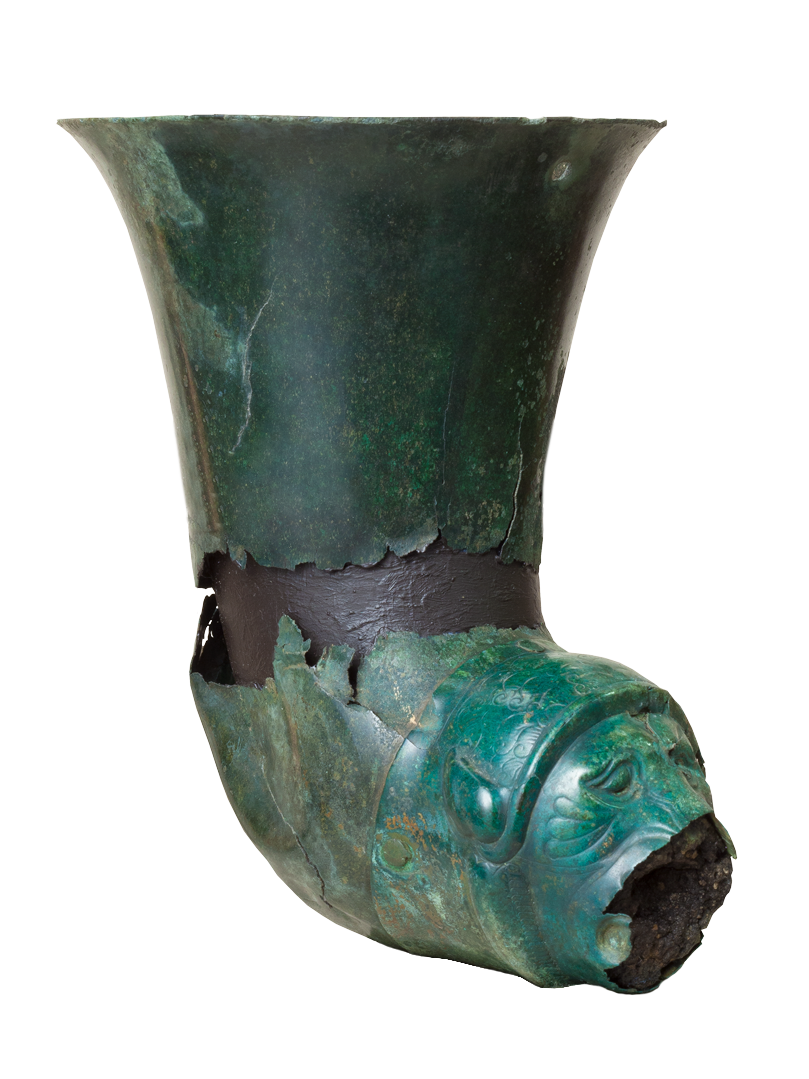Rhyton – drinking vessel of a special shape

The rhyton consists of two parts: the upper - of a truncate conic shape with a faucet near the edge; the lower is sculptures image of a head of a feline predator (lion?), its mane is shown with engraving. Both parts of the rhyton originally were connected with rivets. In figures of winged and horned lions, griffons, deers, panthers and others people saw the embodiment of different divinities of one of the most ancient religions of the world – Zoroastrianism. The influence of Sasanian artistic ideas and art spread on the huge territories from the Atlantic up to the Pacific ocean. In the influence sphere occurred to be the ancient Sogdiana (Sogd) , the area in water gaps of the Zeravshan and the Qashqadaryo (modern territories of Tadjikistan and Uzbekistan) with the capital in Samarkand. Supposedly, one of the arts’ schools of Sogd was formed due to the wave of Iranian (Persian) migration to the east after the conquest of Iran by the Arabs. According to the presentation of different details, the rhyton from the Perm region had Sogdiana’s origin. And came to the Kama River area, probably, by one of the northern branches of the Silk road or over Transcaucasus by the Volga trade route.
Exhibit’s purpose of use – a rhyton is a shape of a vessel that appeared in the high antiquity that comes from the horns of animals. Since the III millennium BC rhytons of silver, gold or bronze were used in cult ceremonies (for sacrifices), and later as attributes of the celestial power of rulers.
Uniqueness. Such vessels with images of high artistic merit of lions, griffons, deers, horses and other animals, characterized the ancient Iranian art of the period of the Achaemenid dynasty rule (VII-III centuries BC), and later also Sasanian dynasty (III-VII centuries AD), when their state became a center of education and culture on the Near East.
